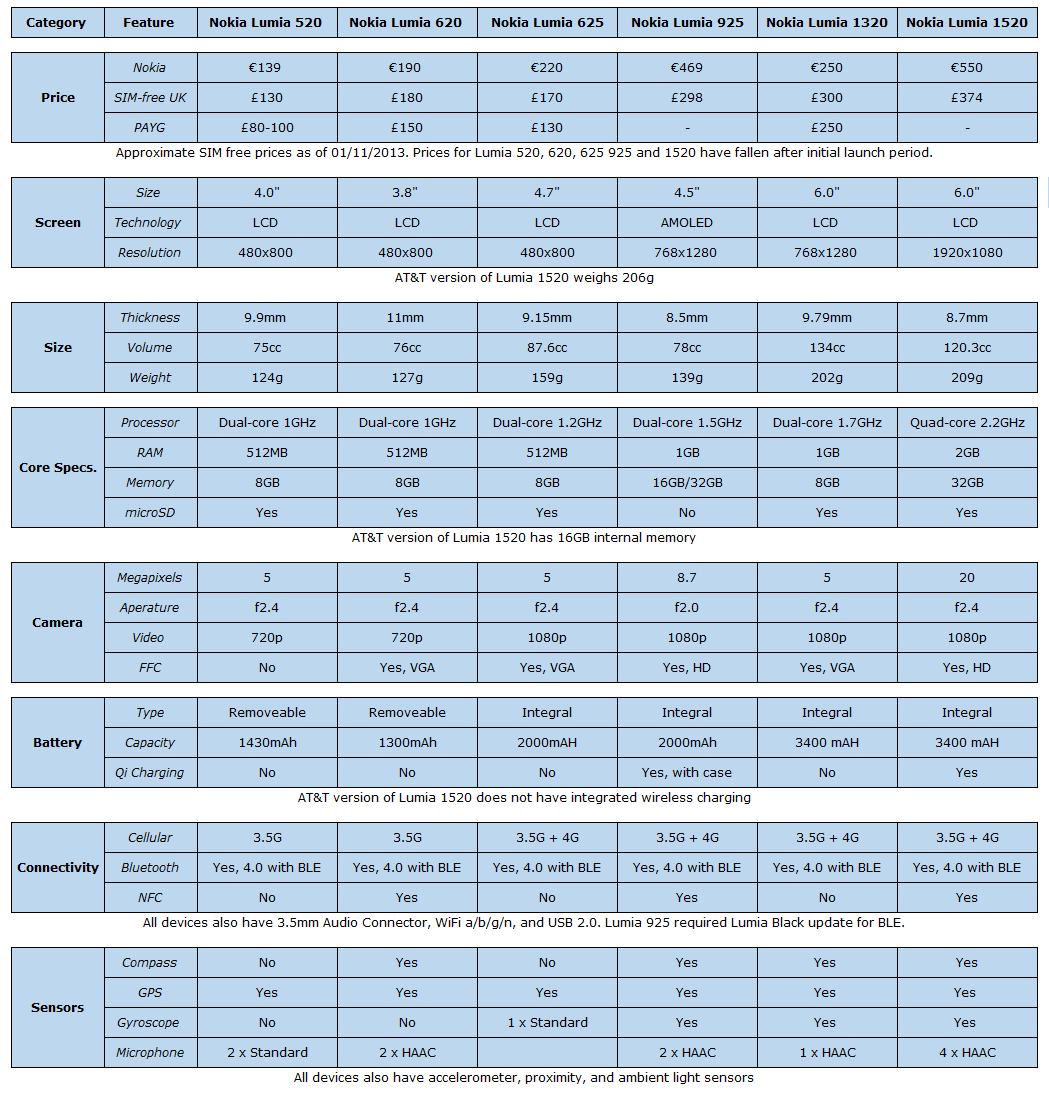Review: Nokia Lumia 1320 (video)
Score:
85%
In this first look review we take an initial look at the Lumia 1320, Nokia's mid tier large screen (phablet) smartphone, which was announced at Nokia World in October of last year. The video-based review offers a tour of the device's key hardware features, commentary on component choice and performance, and discussion on Nokia's positioning of the device.
Version Reviewed: PR 1.0
The Lumia 1320, which is built around a 1.7GHz dual-core Snapdragon 400 processor, is available in white, red, black, and yellow, and is now on sale in select markets, with a price tag of £225 / €250 / $339 (before taxes and subsidies).
Nokia's mid-tier large screen (phablet) smartphone does continue the Lumia 625's mission to position the Lumia range as an affordable choice across a wider range of screen sizes. However, for most consumers it will primarily been seen as a sister to the Lumia 1520, offering the same extra large screen smartphone experience, but at a lower price point.
Specification comparison
The lower price point of the Lumia 1320, when compared to the Lumia 1520, has been achieved by making a number of specification cuts. One of the most obvious of these is the construction method used to put the device together. The Lumia 1320 has the same wrapped multi-part and removable cover design as the Lumia 625. While this does cost significantly less that the all-in-one design used in devices like the Lumia 1520 and 925, the build quality is still very good.
The other two obvious specification cuts are the camera and the screen. The 5 megapixel rear facing camera is able to produce reasonable results and works with all of Nokia's additional camera apps (Cinemagraph, Refocus, Panorama), but it's never going to match up to the PureView branded cameras found on the higher end devices. The front facing camera is knocked down to a VGA resolution, but is still good enough for most video calls.
The screen also takes a step down from the Lumia 1520, with the resolution dropping from 1080p to 720p. While there is also a drop in the screen quality, this cut feels less severe than that for the camera, a sensible choice given the screen-centric nature of phablet devices. The inclusion of Nokia's ClearBlack Display and super sensitive touch technologies, plus protection from Gorilla Glass 3, means the overall quality and performance of the screen is superior to other similarly priced devices in this segment. This contrasts with the Lumia 625, which we felt cut a little bit too much from the screen specification.
The Lumia 1320 is the first Nokia and Windows Phone device to use the Snapdragon 400 processor (1.7 GHz dual-core processor). This, along with the 1GB of RAM, is a step down from the Snapdragon 800 used in the Lumia 1520, but is unlikely to be noticed by the majority of consumers buying the device. In broad terms the Snapdragon 400 used in the Lumia 1320 has similar performance to the Snapdragon S4 used in the previous generation of high end devices (e.g. Lumia 920, 925, 1020). In real world terms, there's only a relatively small performance difference between 1 GHz, 1.5 Ghz, and 1.7 GHz dual-core on Windows Phone, but it is noticeable when opening third party apps or in general use for resource hungry apps (e.g. Cinemagraph and loading of some games).
This Snapdragon 400 is set to become the platform's new standard for mid-tier devices, representing a significant upgrade from the dual-core 1 GHz devices used in previous mid-tier and low-end devices (e.g. Lumia 520, 620, and 720). Later this year, we will see Snapdragon 200-based devices used in the next generation of low-end Windows Phone devices (e.g. equivalent to the Lumia 520), which means there will be three tiers (in specification) terms of Windows Phone devices.
Other notable cuts in the Lumia 1320 specification, compared to its higher end sister, include the omission of wireless charging, the absence of NFC connectivity, and the presence of just a single HAAC microphone (rather than a dual or quad array). The last of these has an impact on both voice calls (noise cancellation) and video recording (stereo sound). For voice calls this is a relatively minor concern as it is possible to do the majority of this noise cancellation in software alone, but it is something that's worth bearing in mind if you shoot a lot of video.
On the plus side the Lumia 1320 stands out from other low end (Windows Phone) devices by virtue of its LTE connectivity, which allows for faster download and upload speeds, though it is of course dependent on network support and availability. It's also good to see that a compass sensor has been included in the 1320, allow for more accurate GPS navigation and the use of augmented reality experiences.

We'll be posting a full text review of the Nokia Lumia 1320 shortly. We'll also cover the positioning and carry out some technical comparisons with other Lumia devices in a later feature article series.
Reviewed by Rafe Blandford at
